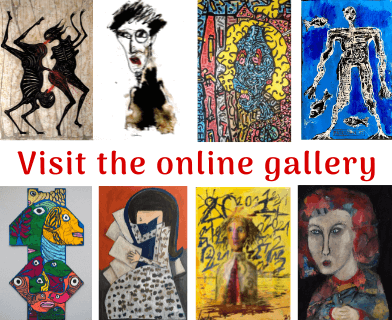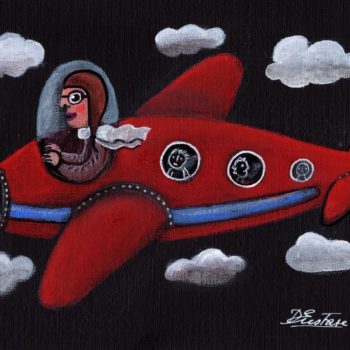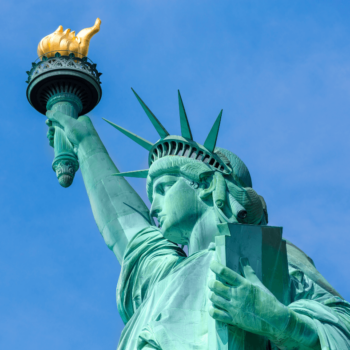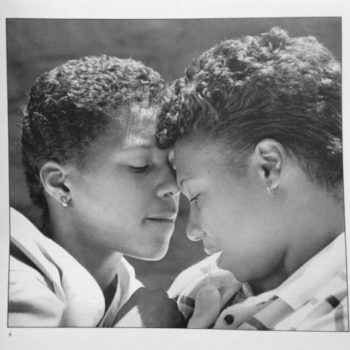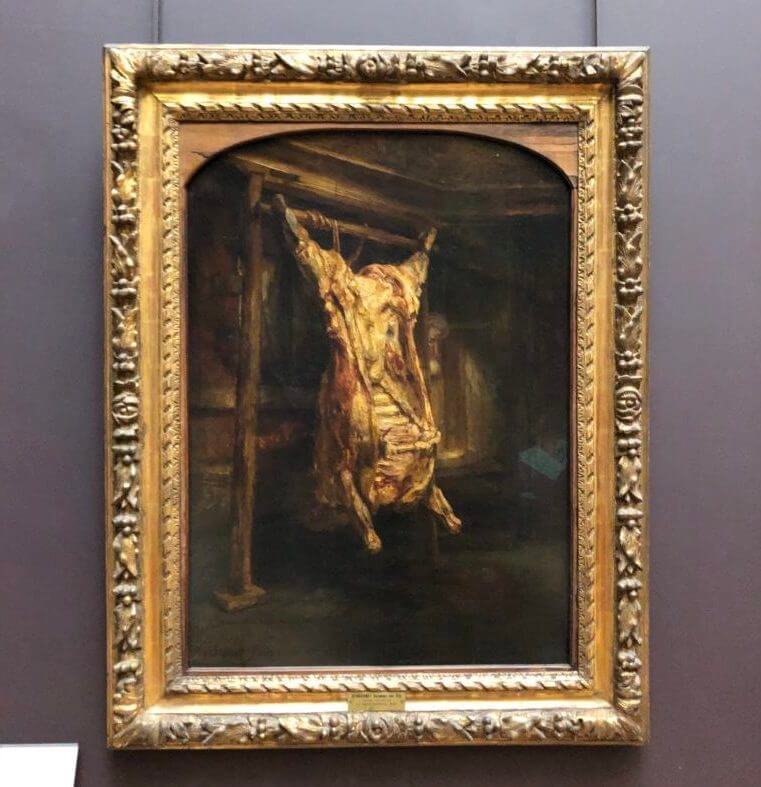
Slaughtered ox (flayed ox), from Rembrandt to contemporary artists
- Post published:5 December 2022
- Post category:Art Files
Between Rembrandt’s famous painting exhibited in the Louvre and the works of today’s artists, nearly 400 years have passed. Yet, there remains a common language with death in the foreground. The death of the animal and the death of the human, like an echo.
Rembrandt tells us "Remember that you will die"!
In 1655, Rembrandt painted “The Slaughtered Ox” (or “Flayed Ox”), a painting currently on display in the Louvre. It is one of the very few still lifes by the great Dutch master. Rembrandt painted this picture with a reduced color palette, white, yellow and red on a dark background. The eviscerated beast is imposing. It crushes the canvas and it is barely possible to see a woman’s face in the background.
This terrifying “memento mori!” (Remember that you are going to die!) has struck a chord in the minds of many artists, both modern and contemporary.
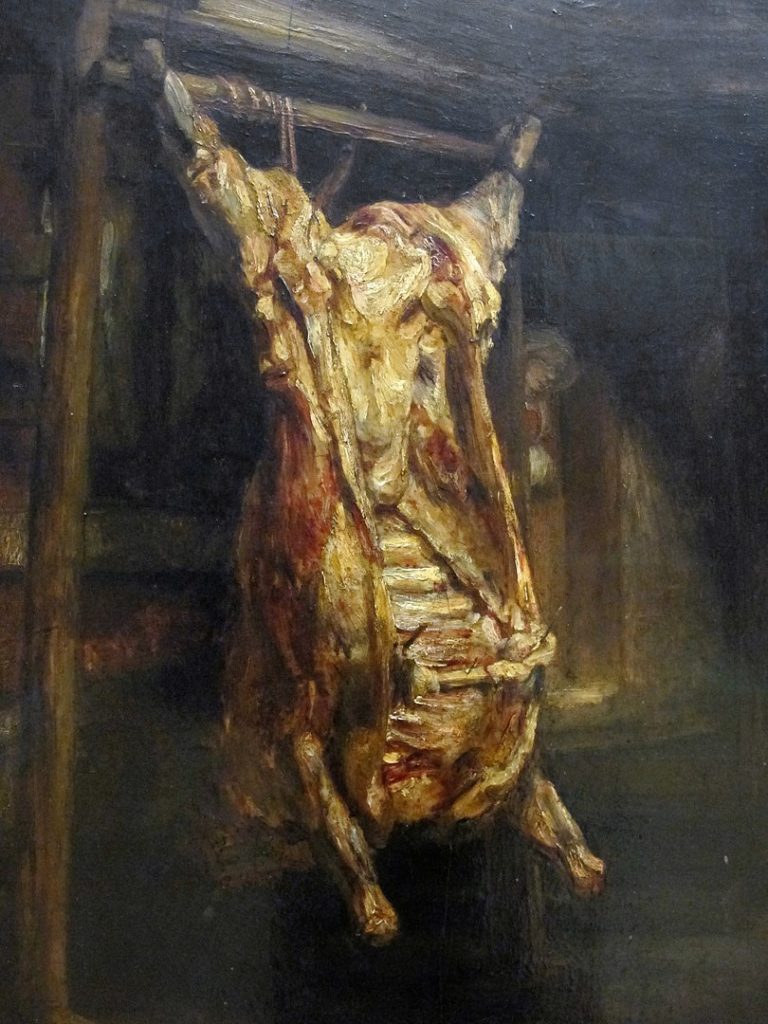
The Moderns reinvent Rembrandt's "The Slaughtered Ox"
By convention, we start the modern period in 1863 with the “Luncheon on the Grass” of Manet. The “Modern” artists reappropriated this major work of the Dutch master. The first was the expressionist painter Chaïm Soutine who painted “The Flayed Ox” in 1925 as part of a series of paintings with the same title and kept in various museums and private collections in Europe and the United States.
As in Rembrandt’s work, the body of the animal occupies almost all the space on the canvas, but the colors are much more violent, between the red of the flesh and the blue of the background.
Indeed, even more than Rembrandt, Soutine paints death in all its violence. Legend has it that the Franco-Russian painter had kept a carcass as a model for more than eight days in his studio, which was immersed in a pestilential smell.
In 1947, Marc Chagall also painted “The flayed ox” but in a poetic treatment. The ox appears with an almost living head posture. The butcher with his knife in hand floats gently in the air, with a snowy village in the background. But the tub in which he seems to be drinking is filled with his blood.
In 1954, Bernard Buffet also embarked on “Le bœuf écorché” (The flayed ox) with an anatomical precision pushed to the extreme that allows us to count the ribs of the carcass. The painting is very dark and the color palette reduced to a minimum. Red, white and black.
The same year, Francis Bacon painted “Figure with Meat” in which appears an old Pope with a bluish face, inspired by the painting “Innocent X” by Velasquez. But the old Pope is represented here between two parts of an animal carcass.
Today's artists still make Rembrandt resonate
In photography with Vanda Spengler
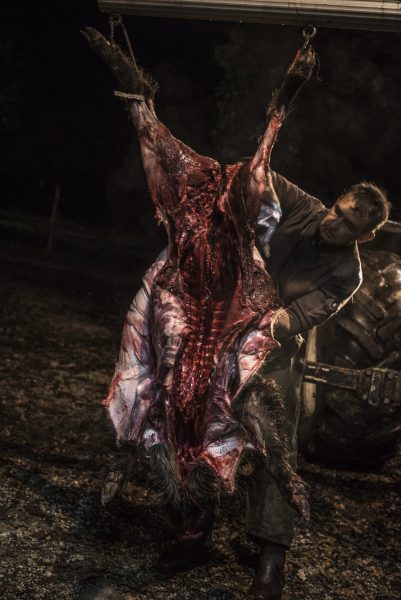
Photographer Vanda Spengler is captivated by flesh. Not erotic flesh, but living, dead or wounded flesh. In her series “Carcasses”, she seized the theme of the skinned animal and in a superb photo, she mixes man and animal in the same movement. We see the butcher as in Chagall. The background is black as in Dubuffet. The meat is red as in Soutine.
Read also : Vanda Spengler, photographer of raw flesh – ARTICLE & VIDEO
In painting with Stani Nitkowski
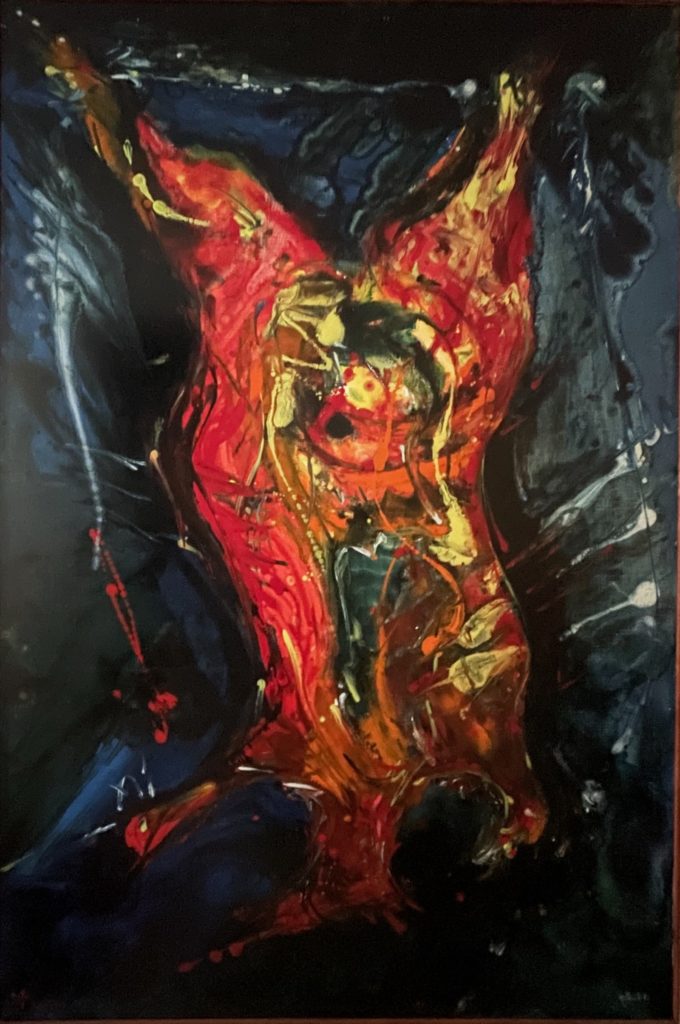
The artist Stani Nitkowski has created a dazzling work celebrating both total life and total death. Among his many works, we find “The flayed ox” after Soutine, because it is indeed the filiation of Soutine that feeds Stani Nitkowski here. We find the reds and yellows of the Russian painter who emigrated to France. The two violently expressionist painters thus communicate together through time. Both will die at fifty years old.
Martine Nitkowski contacts us and confides the "secrets of fabrication" of the painting!
Stani’s painting was done in the dripping manner… not a brush stroke: all the colors and materials were deposited from the top of his tubes and boxes letting them flow with varnish while directing them by lifting the canvas.
This was an incredible feat of control for Stani, as he was handicapped by muscular dystrophy, which deprived him of his strength and his legs.
So he painted this large painting, sometimes crouching, sometimes sitting on his little 12-15 cm high bench… low to the ground so to speak!!! He showed great dexterity for an exceptional and unique result.
He was animated by the strength of this animal that he wanted to put on his canvas. The work now belongs to the contemporary art center of Auberive Abbey.
Fast-food flayed beef with the painter Kendjy
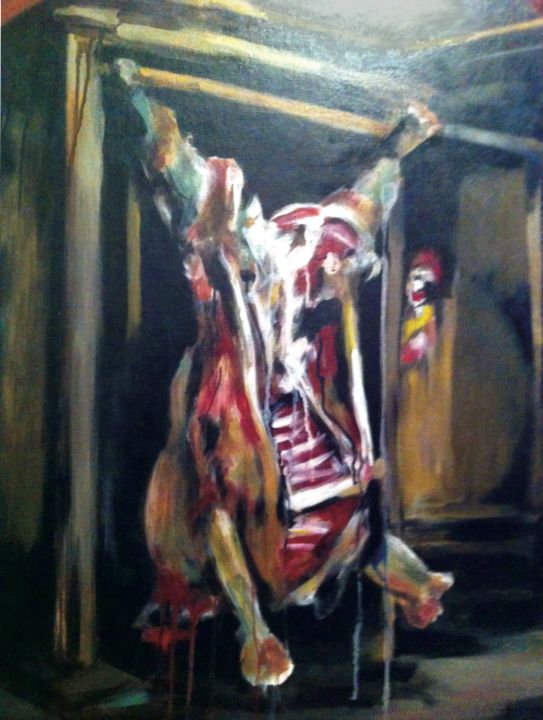
The French artist Kendjy painted “The Flayed ox of Mc Donald”. In the background, he shows the clown mascot of the fast food chain McDonald’s instead of the maid of the Dutch master. At Mac Do where the burgers are hyper standardized and sweet, do we still know what we eat? Kendjy reminds us that burgers are made from skinned beef.
In abstract art with Tessa Zerbid
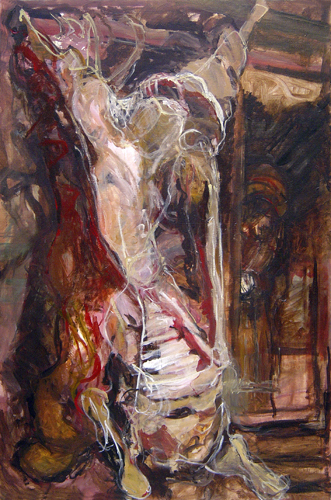
The artist Tessa Zerbid currently paints series in color or in black and white of women and men in their “Parisian” life. She has also done some animal portraits as well as the painting “The flayed ox after Rembrandt” in a treatment between figuration and abstraction where meat and background are mixed in the same dark red.
In sculpture - installation with Isabelle Plat

The sculptor Isabelle Plat has created “The flayed ox” from a piece of clothing that she has transformed into an open corpse. One hesitates to know if it is an animal or a human but in fact, except for the title, everything is human in this terrifying work which seems to refer to a torture scene.
In a painted series with Philippe Cognée
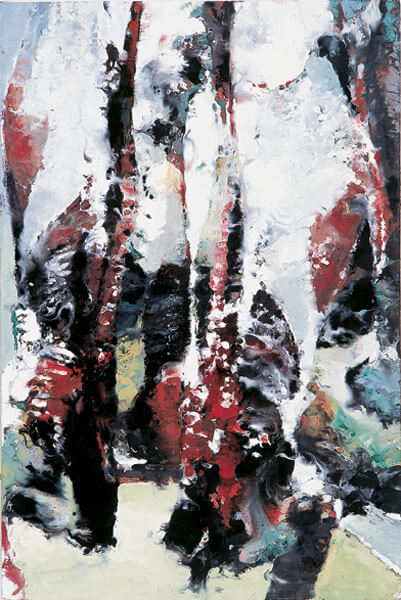
When French artist Philippe Cognée decided to tackle the skinned ox, he did so with a series of paintings he entitled “carcasses”. This production of 36 small formats using heated wax creates an impression of blurred flesh bathed in intense light. This quasi-cinematographic series follows a visit to a slaughterhouse in 2001 that the artist describes in a text published in 2006 during the public presentation of his work.
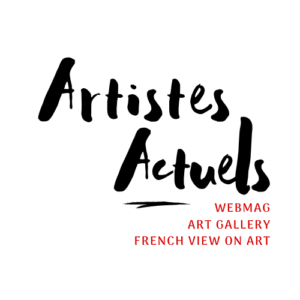
The editorial team
Pleasure and emotion of artistic discoveries

